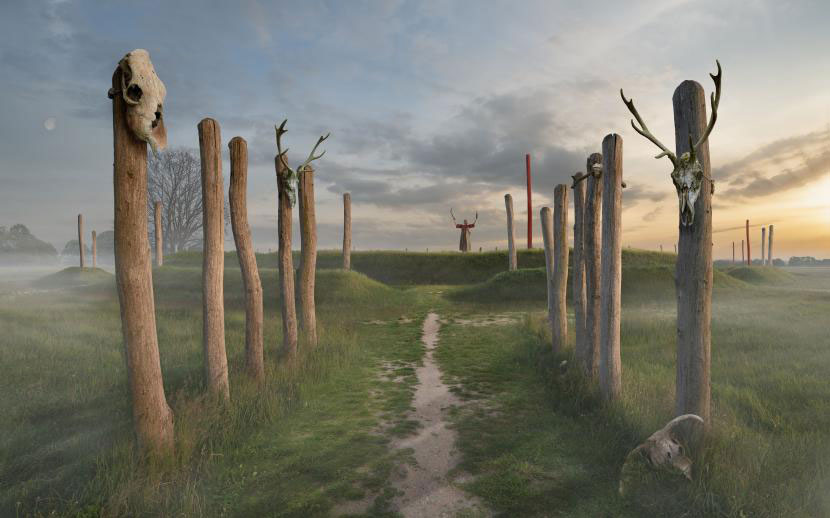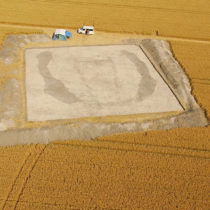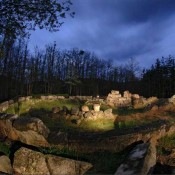A large sanctuary has been discovered in Tiel that is 4000 years old and was dedicated to the sun, just like in the English Stonehenge. The sanctuary consisted of several mounds of earth, one with a solar calendar, wooden posts, cemeteries and a ritual road. People gathered here for sacrifices, funerals, feasts and rituals. The largest hill served as a kind of solar calendar. The shrine has been in use for 800 years. Among the remarkable finds is a glass bead from Mesopotamia (Iraq); evidence that there were already contacts with people in the Ancient Near East.
The discovery of a sanctuary from the early Bronze Age, 4000 years ago, is unique for the Netherlands. The excavations took place in 2017 at Medel, an industrial estate in the Betuwe municipality of Tiel. It is one of the largest archaeological projects in the Netherlands ever. After years of research, archaeologists recently made this spectacular discovery.
The main mound is about 65 ft in diameter and its passages are lined up to serve as a solar calendar. Humans built it at the end of the Stone Age and the beginning of the Bronze Age, 4,000 years ago.
The largest hill was also a solar calendar at the same time. Next to the shrine were wooden farmhouses. The shrine must have been an important place where people kept track of special days of the year, performed rituals and buried their dead.
Solar calendar, ancestors and sacrifices
Not only people are buried in the largest mound. That hill was also used as an observatory: a person, say a priest or priestess, stood on the mound, which was flat on top, and on which there probably stood a large pole. The priest then viewed the position of the sun from the fixed point of the pole. There were more posts around the hill as markers. They helped the priest determine the exact time of year. For example, the people had a calendar for seasons and harvest days.
Around the hill was also a shallow ditch with several passages. On certain days the sun shone straight through those passages on the hill. Just like in Stonehenge, where the sun shines through the stones on important days. The most important days, also in Tiel, were June 21, the summer solstice (longest day) and December 21, the winter solstice (shortest day).
These were not only important moments for the living. The sun shone on the dead in the hill, probably ancestors, literally on the shortest and longest day of the year. Archaeologists also found offerings in places where the sun shone straight through the openings. Animal skeletons, but also human skulls and valuables such as a bronze spearhead.
Bead from Iraq area
People also buried their dead in the area, even outside the hills. Archaeologists found the remains of more than 80 people, some buried, others cremated. The deceased must have played an important role, as ancestors, in the rituals.
Near the graves a glass bead from Mesopotamia (now Iraq) was found. It is the oldest glass bead ever found in the Netherlands. It shows that the inhabitants of this area already had contact with people almost 5000 kilometers away 4000 years ago. The bead proves that people exchanged things and ideas far beyond the area.
More than a million objects excavated
The excavation is also special because it was so extensive. Rarely do archaeologists get the chance to excavate so much terrain around burial mounds. Due to the amount of finds – more than 1 million – it took a lot of time before the archaeologists could draw first conclusions about the past of the area, the people and their customs in the Bronze Age in the Netherlands.
Finds in the museum
The shrine consists of traces in the ground that are now no longer visible. A number of finds can be seen in the Flipje en Streekmuseum in Tiel from 23 June to 20 October 2023. In the National Museum of Antiquities in Leiden, a grave of several people from the sanctuary of Tiel-Medel can be viewed.





